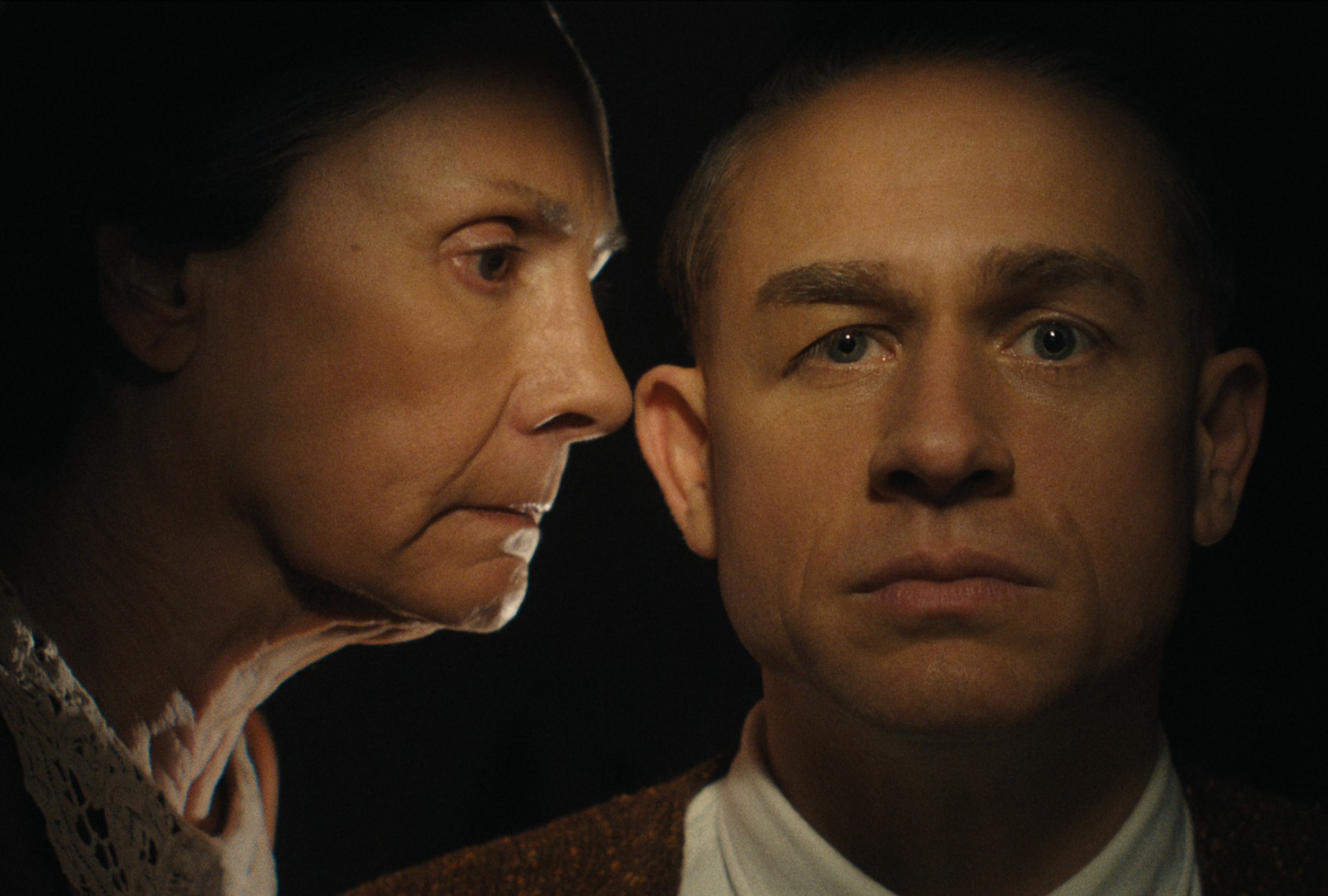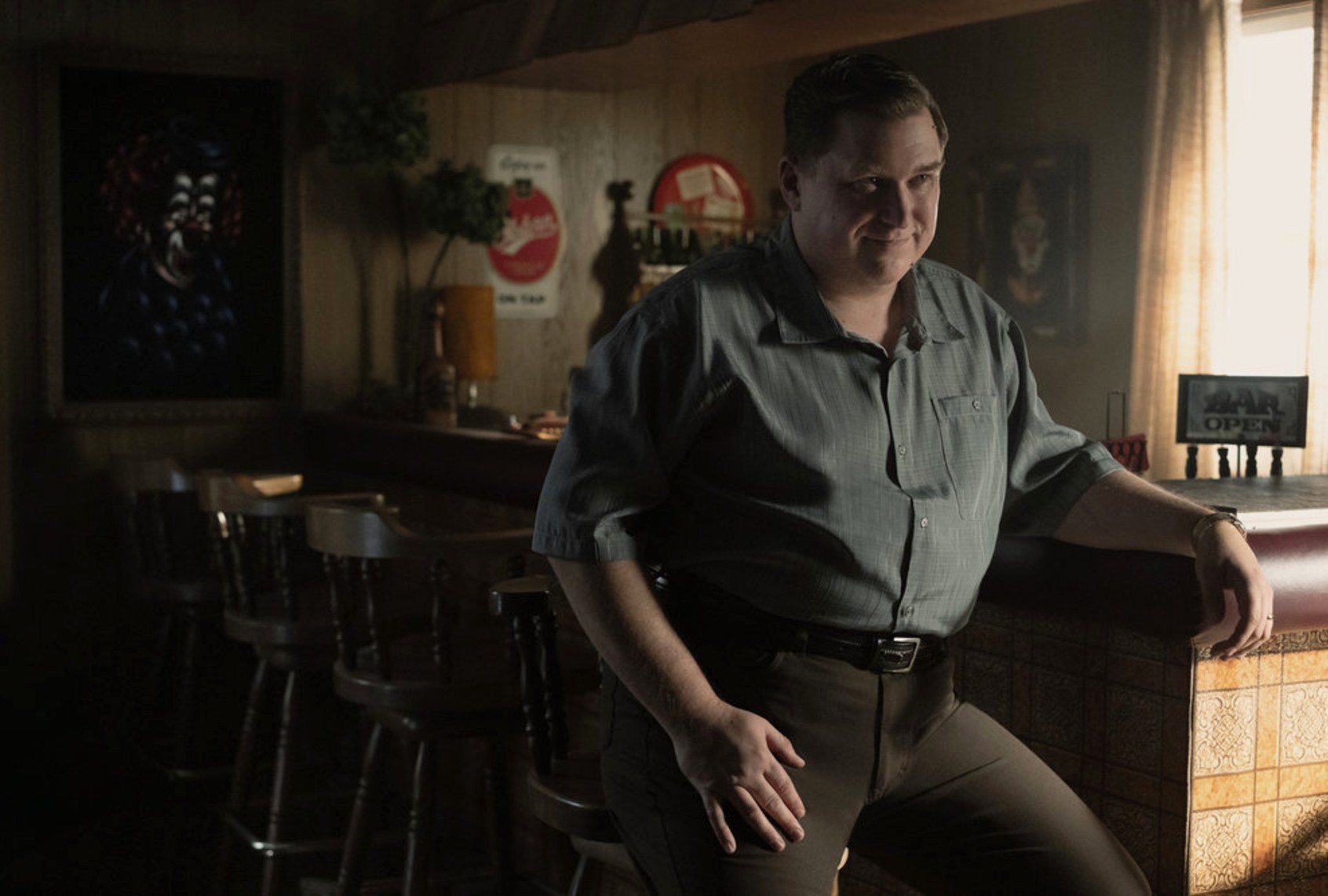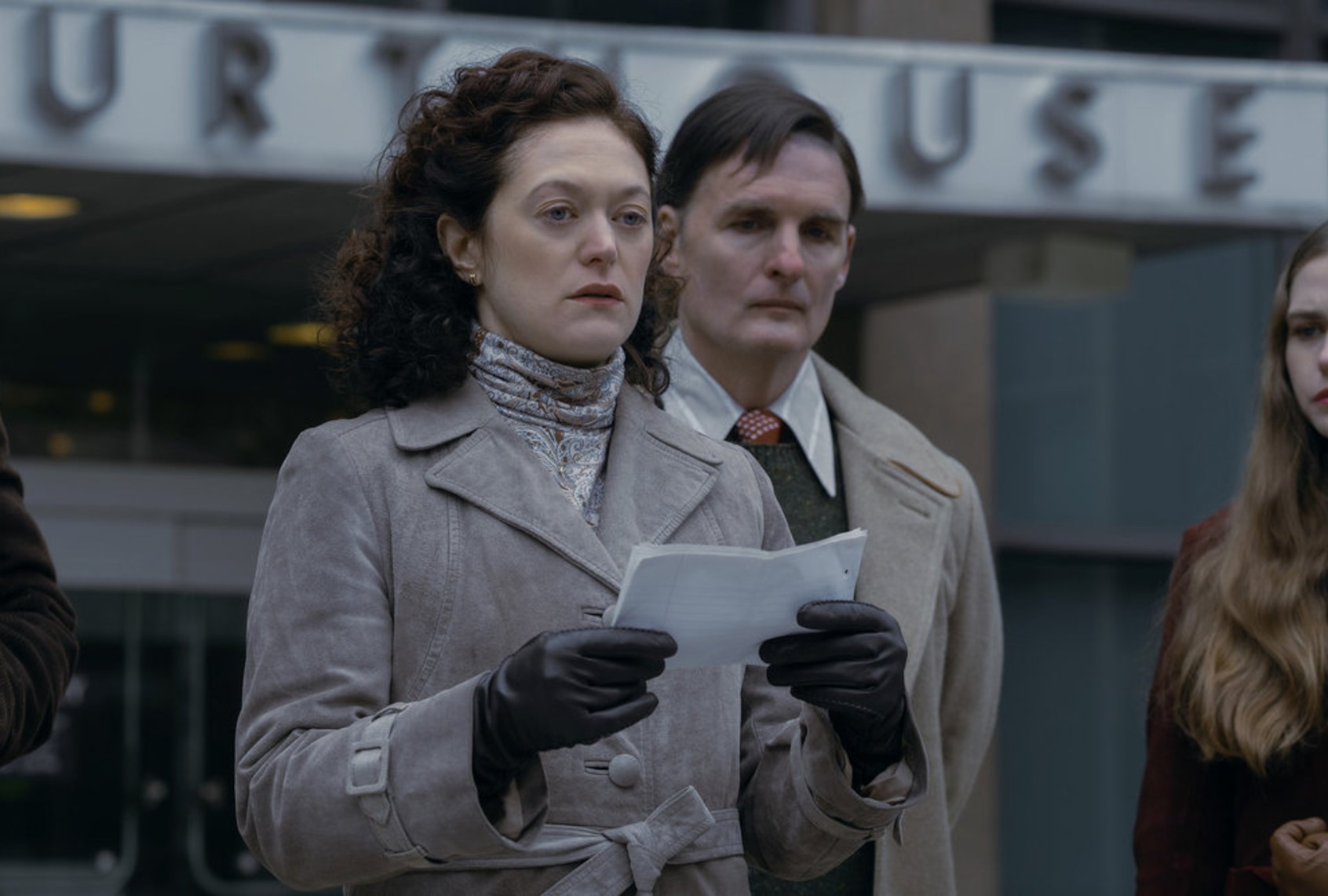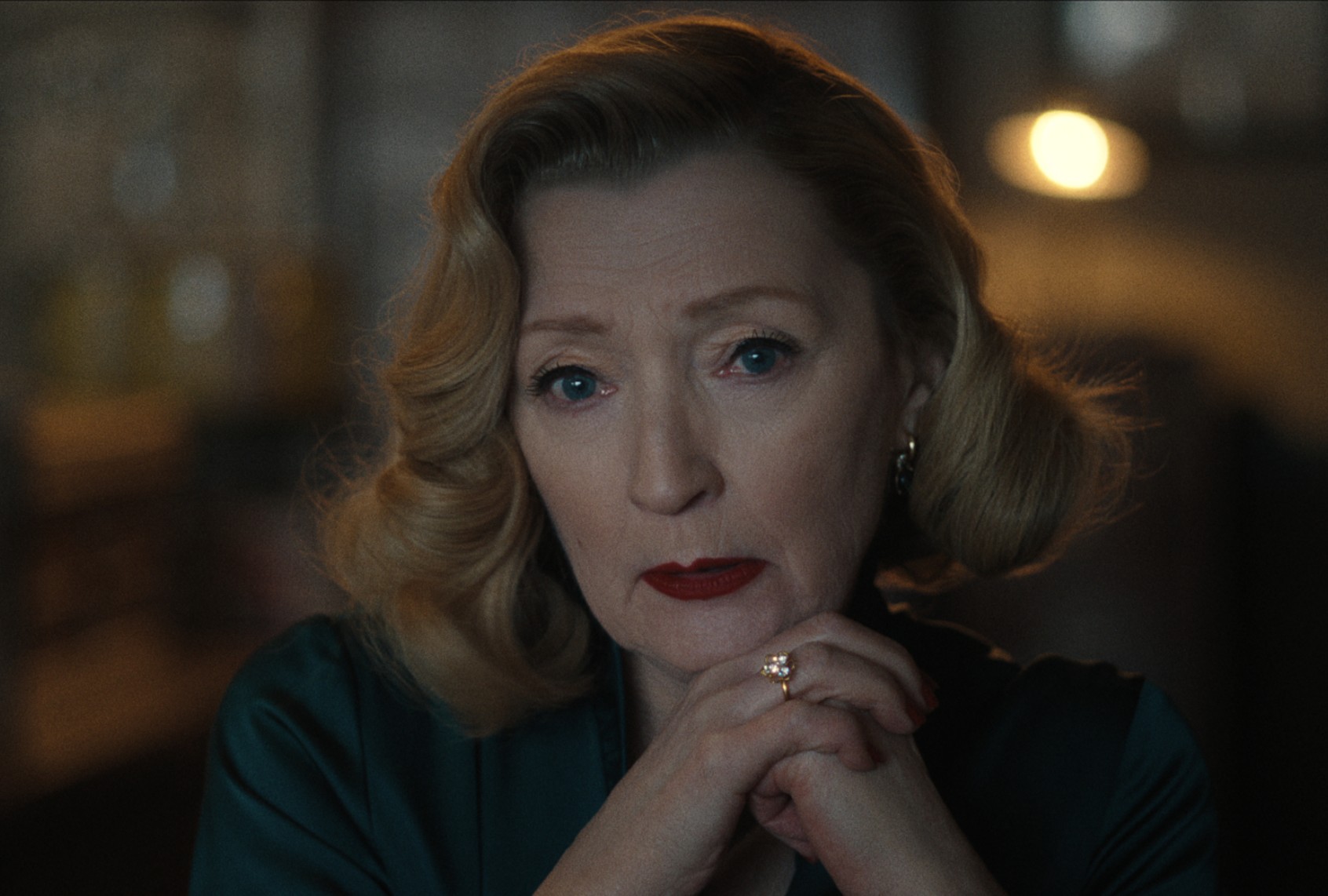Landing on Netflix’s title page for “Monster: The Ed Gein Story” automatically plays a clip of the titular psychopath wearing a dress, wig and hosiery while nimbly dancing to a merry ragtime tune.
A wide lens captures the scene, allowing the viewer to appreciate the discordance of the rotten squalor surrounding Gein, portrayed by Charlie Hunnam, as he prances with a broom before a knock on his door interrupts this intimate moment. Then the shot zooms in on his face to make the full horror of his joy unmistakable, because the features aren’t his. They belong to Mary Hogan, one of the two women he confessed to murdering, and one of many whose faces he turns into masks.
Since “Monster” co-creators Ryan Murphy and Ian Brennan know their audience, there’s a tacit understanding that most will process that gruesome sight as distant enough in the past to become unreal.
It takes sitting through “The Ed Gein Story” to see the living version of Mary, played by Rondi Reed, before Gein takes her life so he can wear her flesh as a costume. And it should take more effort to wrap our heads around that deed’s vileness than it probably does these days. Murphy and Brennan’s purported point in making this third chapter of “Monster” is to drive home how central Gein’s macabre case is to the horror genre. Gein confessed to killing Hogan in 1954 and Bernice Worden in 1957, but was suspected of having murdered others. He’s mainly known for upcycling the flayed skin from his neighbor’s corpses into household furnishings, allegedly inspired by Nazi war criminal Ilse Koch.

(Netflix) (L to R) Laurie Metcalf as Augusta Gein and Charlie Hunnam as Ed Gein in “Monster: The Ed Gein Story”
These “Monster” episodes depict how directly the details of Gein’s killings, grave robbery and stomach-churning hobby of making household items out of human skin and bones influenced classics like Alfred Hitchcock’s “Psycho,” Tobe Hooper’s “The Texas Chain Saw Massacre,” and inspired “The Silence of the Lambs”’ antagonist Buffalo Bill.
But it is Murphy and Brennan’s employment of narrative license with Gein’s tale and the series’ lurid tight shots on upholstery made of human skin that declare the series’ intent more loudly. I’m not just referring to the objective stated in its logline, “that monsters aren’t born, they’re made . . . by us.” Brennan spells out the show’s core message in the second episode dialogue spoken by Hitchcock (Tom Hollander).
“Our audience lives in a world in which God has been banished. They live in daily fear of nuclear annihilation,” the director remarks. “They have stared, quaking, minds numb at the sheer magnitude of the evil that was the Nazi Holocaust. Seen for the first time in history what human beings are capable of when the moral compass is off. Lost.”
Many decades and unconscionable acts have transpired since that speculative conversation. Will Brill’s Hooper points to the bloody business of the Vietnam War’s appalling visuals, brought into American living rooms by the evening news, as an indicator of our hardened sensibility. Thus, he distills the mindless buzzsaw of armed conflict into Leatherface, circling back to Gein yet again.
It may seem as if the point is to turn the mirror on society’s endless appetite for monstrosity. But, as usual, the makers of “Monster” want to have it all ways. Whatever moral disgust we may express at its explicit showcase of severed heads and preserved sexual organs is mitigated by the enduring popularity of this Netflix title. “The Ed Gein Story” has lingered in the streamer’s list of top ten shows since its debut nearly a month ago, reflective of the robust marketplace for horror.
With the genre claiming 17% of the domestic box office for 2025, production studios are eager to feed our seemingly bottomless appetite for cinematic grotesques, especially those based on true stories. This isn’t news to us or to Murphy and Brennan, whose first “Monster” turn sustained criticism for sexing up Dahmer at the emotional expense of his victims’ surviving family members. That didn’t stop people from making it Netflix’s fifth most-watched series of all-time, and Dahmer a disturbingly popular Halloween costume in 2022.

(Brooke Palmer/PEACOCK) Michael Chernus as John Wayne Gacy in “Devil in Disguise: John Wayne Gacy”
That reaction informed showrunner Patrick Macmanus’ approach to rendering “Devil in Disguise: John Wayne Gacy” for Peacock, however. Between 1972 and 1978, Gacy tortured and murdered at least 33 boys and young men in a Chicago suburb, burying 26 bodies in the crawlspace under his house. He was sentenced to death in 1980 and executed by lethal injection in 1994.
Michael Chernus’ depiction of Gacy as the jovial Midwestern contractor next door is chilling enough without displaying his killings onscreen. The series also resists the temptation to show Gacy dressed up as Pogo the Clown, the image that helped kick several generations’ claims of coulrophobia into high gear.
Serial killers’ aberrant psychopathy and body count make them novel. But a writer’s and director’s willingness to stretch the boundaries of narrative deviation changes our notion of what’s acceptable in film and in life.
Such a measured approach enables the real people still connected to the story – the siblings and parents of the murdered and missing, the cops tasked with uncovering the deteriorated remains of sons and brothers whose lives Gacy stole – to retain their humanity and dignity. Primarily framing the story with the experience of the Piests, whose child Robert was Gacy’s last victim, bolsters this approach.
Nevertheless, “Devil in Disguise” interrogates the police’s tendency to mischaracterize his victims, fueling the media and the public’s subsequent rush to cast the dead as somehow deserving of their fate. Robert was a hard-working teenager who crossed paths with Gacy when the contractor floated the opportunity to make extra money. The first person to notice he’s missing is his mother, Elizabeth (Marin Ireland), who shows up at the pharmacy where he usually works to pick up her son, only to be told he left hours before, responding to Gacy’s call for additional labor.

(Brooke Palmer/PEACOCK) (l-r) Marin Ireland as Elizabeth Piest and Greg Bryk as Harold Piest in “Devil in Disguise: John Wayne Gacy”
But when Gacy told police about his modus operandi of raping some of his male victims before killing them, local news seized on that detail to broadly paint his targets as gay men “looking for a good time.” One reporter cites that theory as if to diminish the loss of their lives. Elizabeth’s reaction is wrenching.
Dramatizing the acts of notorious serial killers fires up the journalistic engine devoted to picking at the carcass of accuracy. Reporters view this as a service, keeping recorded facts separate from sickening mythology.
“The Ed Gein Story” is a tapestry of subplots stewed in dramatic license, inviting all variety of clickbait addressing whether Gein had sex with dead bodies or consumed his victims. Or if Gein’s rumored girlfriend, Adeline Watkins, was the cruel, gore-obsessed vixen that Suzanna Son’s performance makes her out to be.
Perhaps the most questionable fabrication involves Gein’s second confessed victim, Beverly Worden (Lesley Manville), a local hardware store owner rendered as a nervous, lonely divorcee who throws herself at Hunnam’s killer and entices him with sex. Later, her son, Deputy Sheriff Frank Worden (Charlie Hall), has the horrid misfortune of not only discovering his mother’s eviscerated, headless corpse but being in the presence of Gein’s collection of vulvas, including hers.

(Netflix) Lesley Manville as Bernice Worden in “Monster: The Ed Gein Story”
Gein historians, and there are plenty, decry the inaccurate portrait of a drunken Frank sponsoring an auction selling off the items in Gein’s home when, in reality, he was reported to be disgusted by that idea. Gein’s dilapidated farmhouse burned down, and although arson was suspected, the fire’s cause was never determined.
But this flexibility with the case’s facts is one of many acts of distancing that aid in countenancing the unthinkable.
“Devil in Disguise” doesn’t allow the audience to get off that easily. Flashbacks illustrate who Gacy’s victims were to the people who knew and loved them, landing on the more sensitive and sensible view that they saw Gacy as trustworthy, upstanding, and therefore unthreatening. Similar descriptions summarize any number of crimes previewed in episodes of “Dateline” and the galaxy of crime shows it and other network newsmagazines spawned.
Start your day with essential news from Salon.
Sign up for our free morning newsletter, Crash Course.
Serial killers’ aberrant psychopathy and body count make them novel. But a writer’s and director’s willingness to stretch the boundaries of narrative deviation changes our notion of what’s acceptable in film and in life. We don’t have to wonder how much real-world atrocity we’re willing to absorb due to our shifted relationship with these highly personal fantasized versions. Ours is an era when every shred of ephemera is for sale, so why wouldn’t a mourning son attempt to liquidate a killer’s personal effects to claim compensation for his mother’s death? When pictures of children murdered in wars and footage of a public figure’s assassination circulate on the Internet at the speed of a page refresh, what’s the harm in a few more grisly sights presented as entertainment? At least the flesh is made of latex.

(Brooke Palmer/PEACOCK) (l-r) James Badge Dale as Kozenczak and Gabriel Luna as Tovar in “Devil in Disguise: John Wayne Gacy”
Macmanus’ conscious acknowledgment of Gacy’s survivors lends a weight and dignity to “Devil in Disguise” that isn’t present in “Monster.” Since Gein’s ghoulish acts were discovered in 1957 and he’s been dead for 41 years, perhaps Murphy and Brennan counted on the public to relegate the reality of what he did to the community of Plainfield, Wisconsin, to the status of an urban legend, a bogeyman tale supersized by lengendary revulsion.
Any of Gein’s contemporaries who are still alive would have been too young to fully grasp the enormity of the way he desecrated the memory and bodies of their community’s loved ones. But this ignores consideration for any descendants touched by this history.
Even Osgood Perkins, the son of “Psycho” star Anthony Perkins (depicted in “The Ed Gein Story” by Joey Pollari), decries the way franchises like “Monster” try to spin meaning out of cases epitomizing human depravity. The “Longlegs” director shared his concern with TMZ “that the Netflix-ization of real pain [ie the authentic human experiences wrought by ‘actual events’] is playing for the wrong team.”
The algorithm indicates that side of public sentiment is winning. It’s frightening to ponder what that says about us.
“Monster: The Ed Gein Story” is streaming on Netflix. “Devil in Disguise: John Wayne Gacy” is streaming on Peacock.
Read more
about this topic
